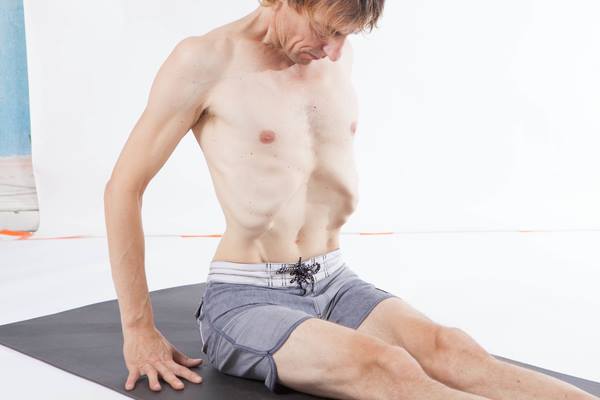

(Photo by Joe Longo Photography)
Excerpt from an in-depth study talk
Notice that in the Ashtanga system we are very particular about the way we transition into and out of every asana, we think of each asana as made up of a certain number of positions. And thus, from the moment you step on your mat until you lay back in Shavasana, every in and out breath and each corresponding position is accounted for. We’re like that guy on Sesame Street- the Count! Ashtangis are obsessed with the count.
And we are not alone in this obsession. The word Samkya means to enumerate, to count, and Samkya is the Indian philosophy system that the yoga sutra’s are founded upon. Samkya yoga is really a study of categories of reality. There are 25 categories with Purusa and Prakrti as categories 1 and 2. Like Ashtangi’s, Samkyan’s are always counting, that is why in the yoga sutra’s there are many lists: 5 klesha’s, 5 yama’s, 5 niyama’s, 8 limbs. 9 obstacles etc. And Ashtanga is right in agreement with all that counting, in our system there are: 22 positions in Janu B, 18 in Marchyasana C, 5 in Uttitha Trikonasana etc.
Maturing in Ashtanga means coming to know all those counted positions. Knowing the position and breath within your sequence of asanas helps you to focus your awareness on specific locations within your body. Part of how to extract the meditative potency from this particular ally is to become keen on defining the end point of every position. The idea of the end point of the position must sink in to your consciousness— by ‘define the end point’ I mean arrive in each position and stop your body—even if the position is just a transition—at least stop, pause, enjoy, allow yourself to be wholly in that position for a distinct moment.
Just like when you work with breathing at the end of your practice—at the end of the out breath there is a gap, a pause- you want to enjoy the little moment of neither breathing out or in before you inhale. And also at the end of the in breath, there is natural gap between the end of the in breath and the beginning of the out breath. That pause helps you to be aware, and thus to create meditation. And you want to experience the same thing with each of the transition positions that serve to bring you into and out of your postures. For example, in Surya Namaskara you breath in and reach up into first position and pause—enjoy a little moment there, even if it’s just a fraction of a second, it’s still a little moment. You do this with very position, looking for a flash of illumination in that tiny moment between movements and breaths.
Coming to the end point of the vinyasa position helps you answer these practical questions:
-What is the shape that I am making in that position?
-How can I gesture or move with a completeness in order to deftly and confidently come to the end point of the position?
-Where, in a bodily sense, is my destination?
The process of working on defining the end point of the position is what focuses your mind and clarifies your postures, this type of strategic thinking is also what helps you to keep recreating the single asana time and again. That small gap of repose that you win by knowing where your movement is taking you, gives you a tiny gap of space to clarify your foundation, central axis, breathing, bandhas- all of these become available to you -PRATIBHA- In a flash. In that single moment of defining the position.
But also remember to be very patient. It’s challenging to do what I am saying. It’s not easy to assimilate all the information and then be able to put it together in a rapid fire, lightning strike style while remaining calm. You won’t be able to understand everything at once, it will take rehearsal, clear intention, visualization and memory to gain mastery. Let the little tiny understandings come—and they will come. If you let those insights build, your vinyasa knowledge will expand.
——here’s the last line— I almost cut it— but it’s too funny—-
Slowly, slowly, slowly, patiently. And so what if I’m yelling NO NO NO! I’m sorry, I get carried away because this stuff is so good, I don’t want you to miss any of it. Enjoy OM!
Comments
No comments.